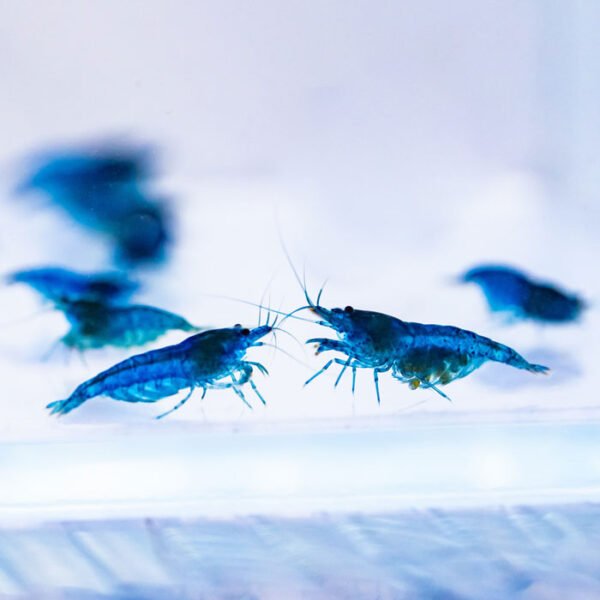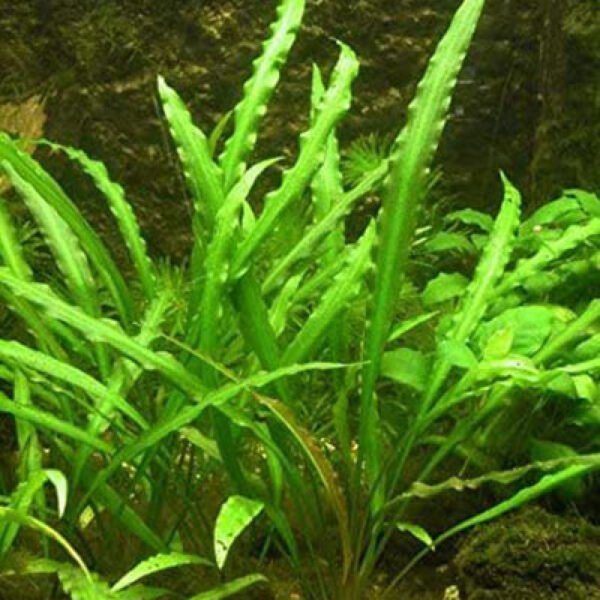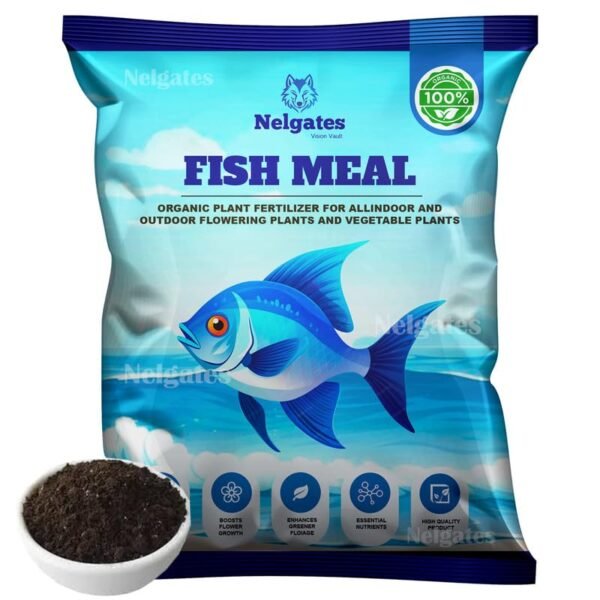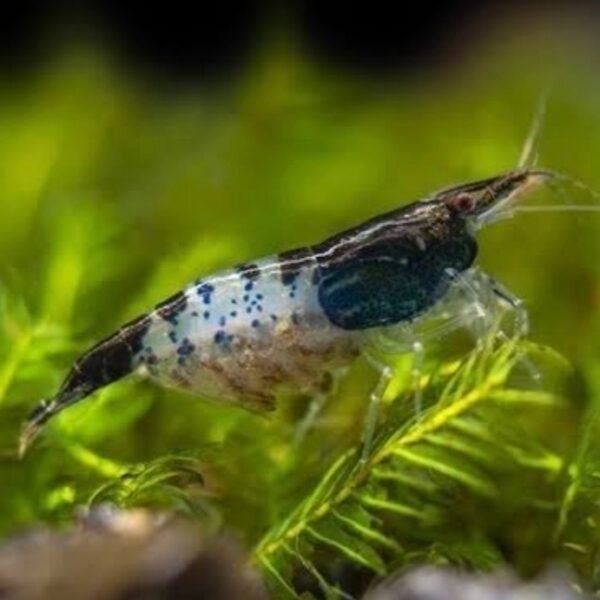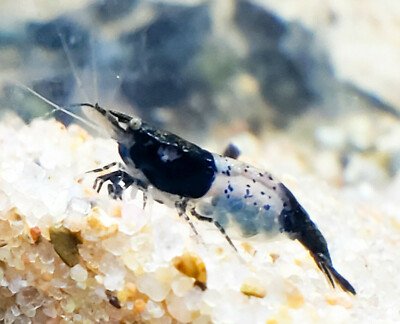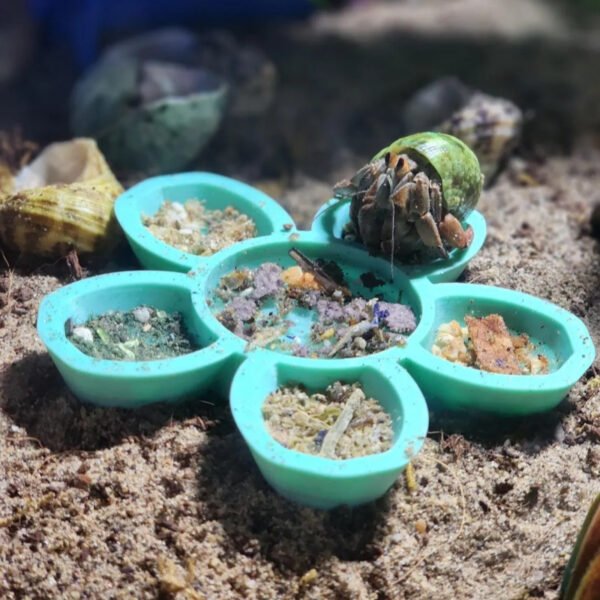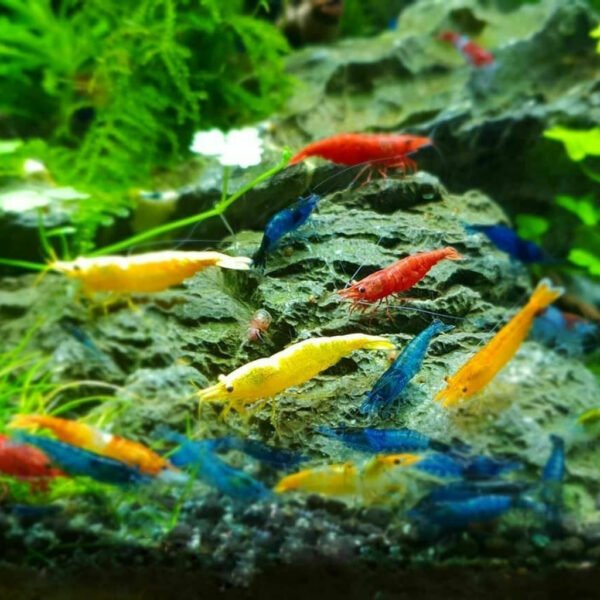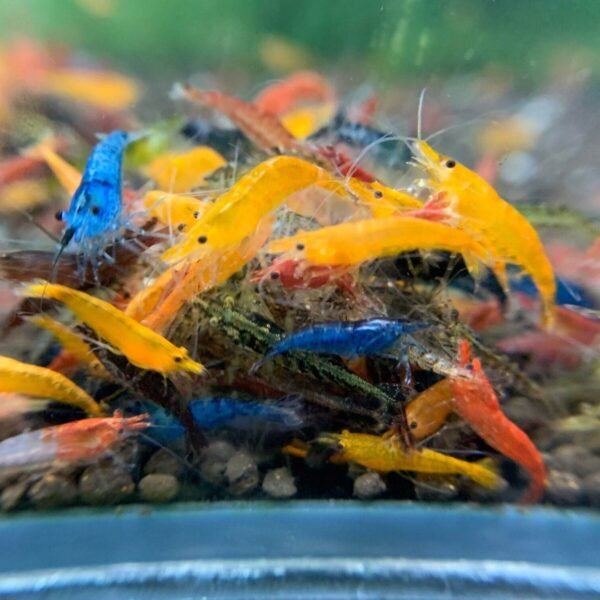Description
Dwarf Orange Mexican Crayfish (Cambarellus patzcuarensis sp. Orange – CPO)
📌 Basic Info
-
Scientific Name: Cambarellus patzcuarensis sp. “Orange”
-
Common Names: Dwarf Orange Crayfish, CPO
-
Family: Cambaridae
-
Origin: Mexico (Lake Pátzcuaro region)
-
Size: 1.5 – 2 inches (4 – 5 cm)
-
Lifespan: 2 – 3 years
-
Tank Zone: Bottom dweller
🌊 Water Parameters
-
TDS: 150 – 250 ppm
-
pH: 6.5 – 7.8
-
Temperature: 20 – 26°C (68 – 79°F)
-
Hardness: 6 – 12 dGH
🦞 Characteristics
-
Brilliant bright orange body, stands out vividly in aquariums.
-
One of the most popular dwarf crayfish due to its small size and peaceful temperament.
-
Less aggressive than larger crayfish, but still semi-territorial.
-
Very active, often exploring or foraging instead of hiding.
-
Can molt and regenerate lost limbs.
🍽️ Food
-
Type: Omnivorous scavenger.
-
Diet: Algae wafers, sinking pellets, blanched vegetables (zucchini, spinach, cucumber), frozen/live foods (bloodworms, brine shrimp, shrimp pellets).
-
Feeding Schedule: Once daily in small amounts; remove uneaten food.
🛠️ Tank Setup & Maintenance
-
Tank Size: Minimum 10 gallons (for 1–2 crayfish).
-
Filtration: Gentle but effective; avoid strong currents.
-
Decor: Hiding places are essential – rocks, caves, driftwood, PVC pipes, plants.
-
Substrate: Fine gravel or sand; they dig occasionally.
-
Water Changes: 20–25% weekly.
👥 Social Behavior
-
Peaceful for a crayfish species; can live in community aquariums.
-
Can be kept singly or in small groups (ensure hiding spots to reduce territorial disputes).
-
May sometimes nip at very slow or sleeping fish, but generally safe with fast and peaceful species.
✅ Do’s
-
Provide multiple shelters to reduce aggression when keeping more than one.
-
Use a tight-fitting lid (can escape if given a chance).
-
Maintain stable, clean water with good oxygen levels.
❌ Don’ts
-
Don’t house with large or aggressive fish (cichlids, bettas, etc.).
-
Don’t overcrowd – stress and fighting will occur.
-
Avoid copper-based medications (toxic to crayfish).
⭐ Quick Tips
-
Compact size and bright orange color make them a fantastic choice for nano and community aquariums.
-
Much safer for live plants compared to larger crayfish.
-
Hardy, peaceful, and interesting to watch – ideal for beginners and experienced keepers alike.



